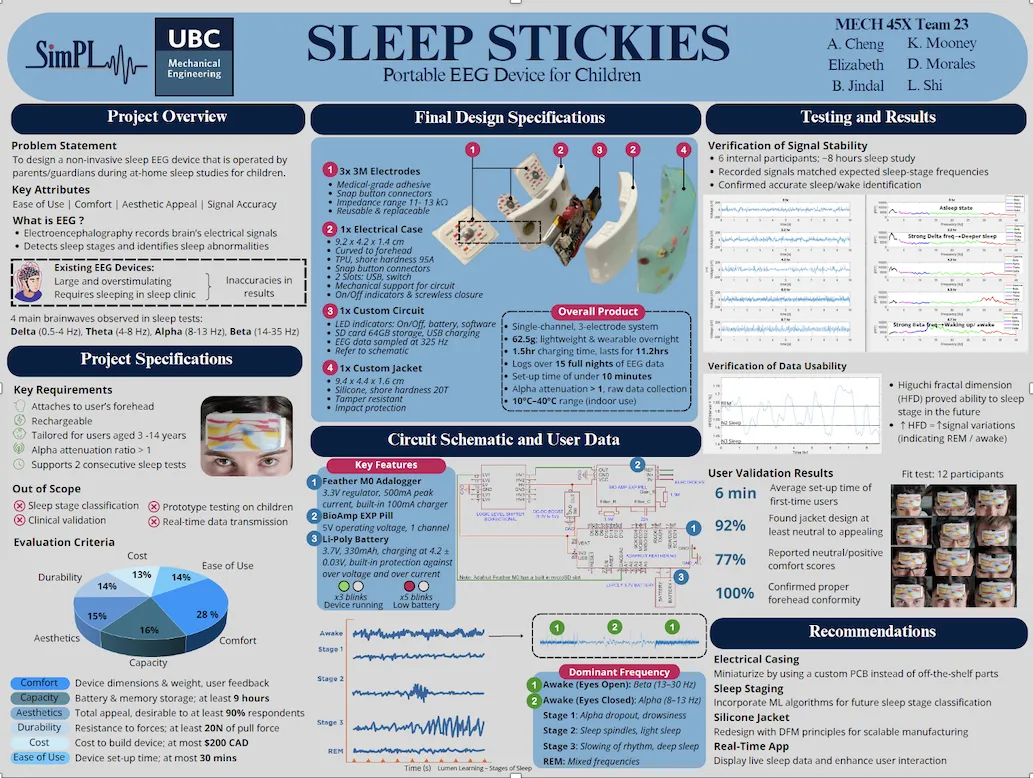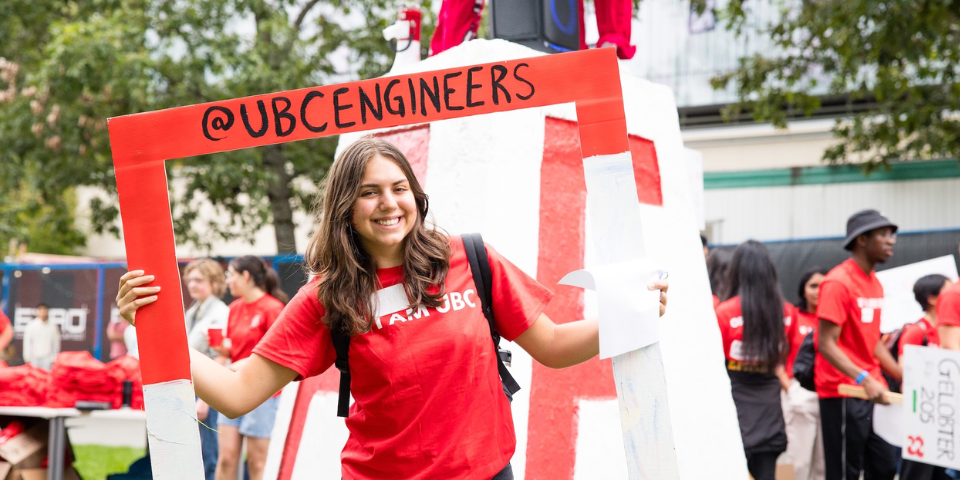
Alycia Cheng, Elizabeth, Bhavita Jindal, Dainelle Morales, Kendall Mooney, Lindy Shi
- Community Partner: Dr. Lyndia Wu, Department of Mechanical Engineering
- Degree:
- Bachelor of Applied Science
- Program:
- Campus: Vancouver
Our project
EEG (electroencephalography) devices are used to diagnose and monitor epilepsy, sleep disorders, brain injuries and other conditions. These devices often include more than 20 electrodes that are attached to the scalp to collect data while the patient spends the night at a hospital or sleep clinic. The long set-up time, combined with their use in away-from-home settings, makes it difficult to use these devices when working with patients who are children.
Our client, Dr. Lyndia Wu, asked us to design a child-friendly portable non-invasive EEG device that could be used by children in home environments.
We were encouraged to make the device as accessible as possible and to create a simple design and interface that would be easy to use and visually appealing.
The challenges we faced
One issue we faced was determining how to quantify some of the design criteria for this project. It was extremely important for our client that the device be comfortable, but determining how to quantify comfort was not straightforward. One of the primary qualities associated with comfort was not being able to perceive the device or have it negatively affect your sleep quality.
We developed a formula that incorporates user feedback and other variables, including the thickness of the device (a thicker device was more uncomfortable if you moved around while sleeping) and skin irritation.
As is often the case in the design cycle, we would come up with an idea that seemed promising, but as we advanced the initial premise new issues emerged. Each design decision had implications. Our early iterations – which were much bulkier or had a longer band – looked quite different from the finished product. We also faced some technical challenges when integrating the mechanical and electrical parts and encasing the electrical circuitry.

Our project’s future
The device we’ve developed is meant to be used in a research setting, rather than being commercialized and sold to market.
There are areas where it could be refined, including miniaturizing the electronic components to make it even less bulky. While our device can record brain waves and store data, it doesn’t analyze the data on sleep stages. Future iterations could incorporate machine learning algorithms to classify sleep stages and could connect the device to an app to enhance user interaction.







